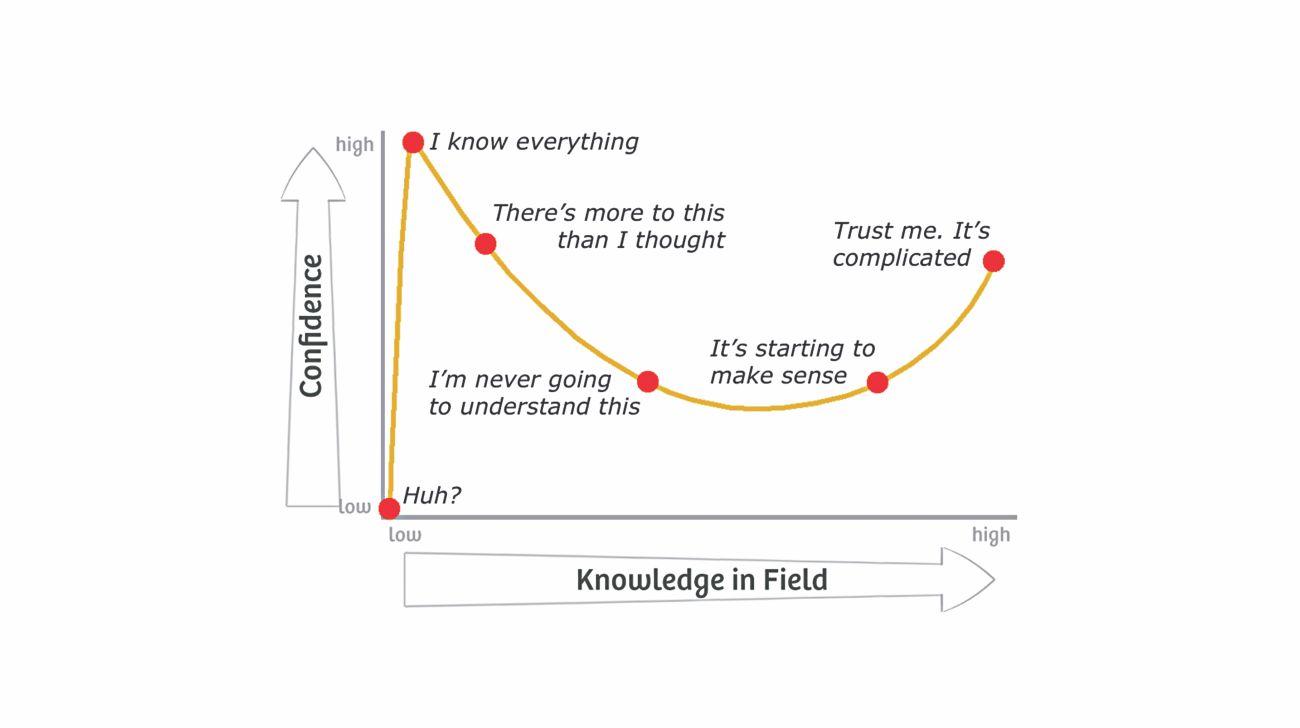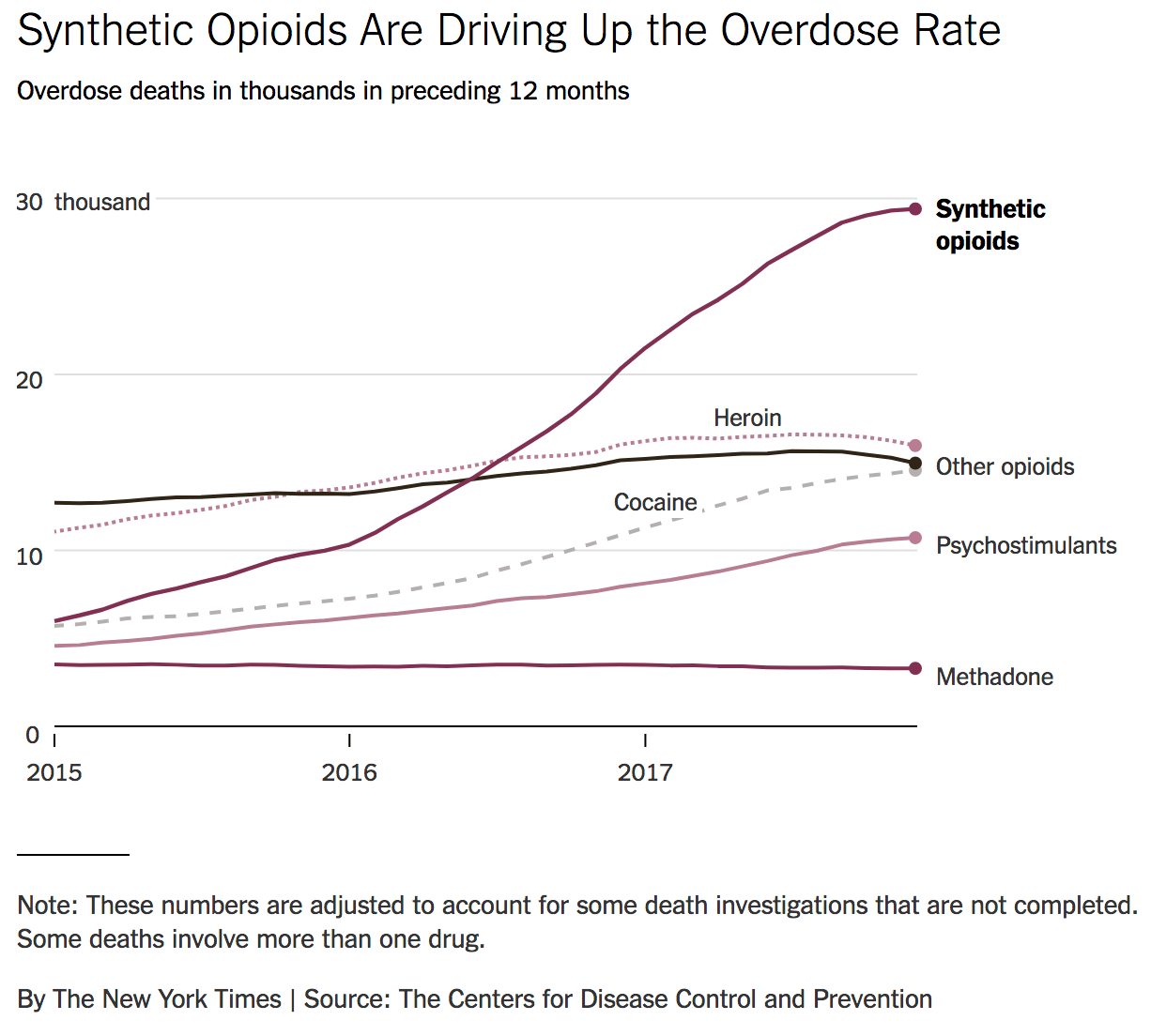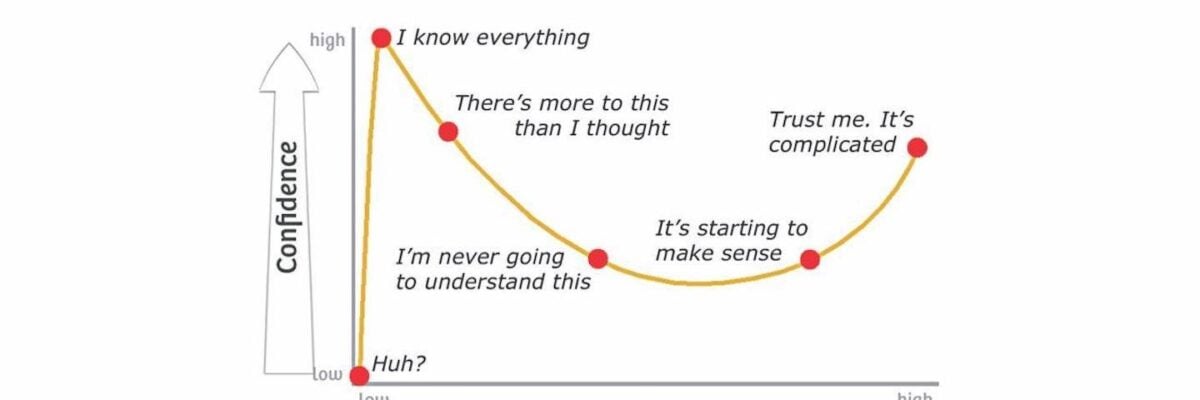I can’t believe I just found about the Dunning-Kruger effect. In a nutshell, it’s the cognitive bias of illusory superiority that comes from our inability to recognize our lack of ability. It might actually explain much of the Twittersphere.

Image credit: Erik de Haan
Granted, since I just learned about the Dunning-Kruger effect, I’m at the stage where I think the Dunning-Kruger effect explains everything! Bertrand Russell probably had it pegged almost 100 years ago: “The fundamental cause of the trouble is that in the modern world the stupid are cocksure while the intelligent are full of doubt.” I should probably stick a post-it note of this quote next to my monitor as a self-check, and an overall awareness of human psychology.
Speaking of eye-opening (and sobering) graphs, I was blown away by this one provided by the CDC, by way of this NYT article, Bleak New Estimates in Drug Epidemic: A Record 72,000 Overdose Deaths in 2017.

This preliminary estimate by the CDC puts death by overdose higher than yearly death totals from H.I.V., car crashes, or gun deaths. This subject is near and dear to my heart, as I’ve discussed in a few podcasts. I’m planning a podcast around this topic with a man who lost his son to a fentanyl overdose 3 years ago this week. I know this will be a tough discussion, but I’m confident it will help many.
Lastly, I’m excited to release tomorrow’s podcast with Matt Kaeberlein, on the heels of the David Sabatini episode. Among his many positions and accolades, Matt is the Director of the Dog Aging Project, looking at the effects of rapamycin on aging, and age-related diseases in companion dogs. If you want to be a little more prepared, check out his 2017 pilot study.
– Peter




